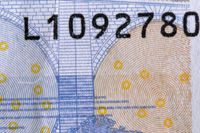Tamron Di Lenses
Just What Does Di Mean
Tamron's New SP AF 28-75mm F/2.8 XR Di LD Aspherical [IF] Macro And SP AF 180mm F/3.5 Di LD (IF) 1:1 Macro Lenses First announced at the photokina show in October 2002, Tamron's "Digitally Integrated" series of lenses began shipping in the summer of 2003. Developed to solve some of the problems caused by conventional lenses when used with digital cameras, the Di series is equally appropriate for use with 35mm SLRs. Initially, five lenses will be available: the SP AF 17-35mm f/2.8-4 Di LD Aspherical [IF], the SP AF 70-200mm f/2.8 Di LD [IF], the SP AF 200-500mm f/5.6-6.3 Di LD [IF], and the two that I tested. During trips to New York, Ottawa, and Quebec City, I worked extensively with the SP AF 28-75mm f/2.8 XR Di LD Aspherical [IF] Macro zoom and the SP AF 180mm f/3.5 Di LD (IF) 1:1 Macro. Di Lens Technology |
||||
The CCD and CMOS sensors used
in digital cameras are designed for optimum results with light that strikes
all pixels at a 90Þ angle. Because of peripheral light falloff,
less light reaches the pixels at the edges of the sensor. This can produce
uneven brightness or vignetting. The problem is minor with some conventional
lenses and more serious with others. |
||||
The 28-75mm Di Zoom
|
||||
The 180mm Di Macro
Lens Final Evaluation Technical Specifications
SP AF 180mm f/3.5 Di
LD (IF) 1:1 Macro |





































